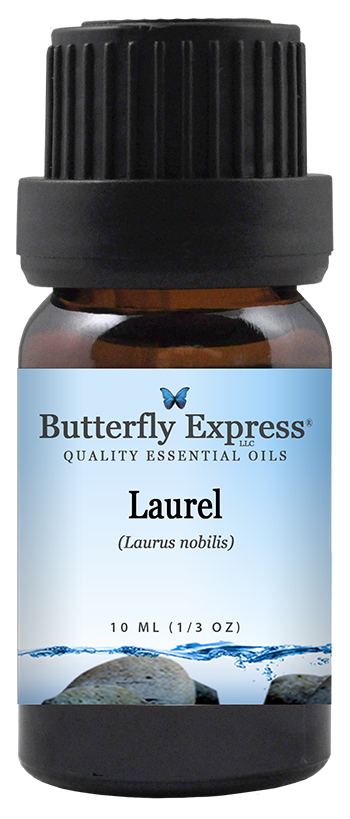Laurel
(Laurus nobilis)
INGREDIENT IN: LeExhale, LeIQ, LeSafeGuard, LeSolace
THERAPEUTIC PROPERTIES: analgesic, antiseptic, antiviral, carminative, decongestant, diuretic, emmenagogue, nervous system tonic
AFFINITY FOR: lymphatic system, hair, scalp, skin
RESONANCE: physical, emotional
PLANT FAMILY: Lauraceae
PART UTILIZED: leaves, wild crafted
EXTRACTION METHOD: steam distilled
AROMATIC CONSIDERATIONS: Laurel clears the mind while relaxing the emotions; perfect for test taking and other challenges.
APPLICATION: Laurel should be diluted and applied to appropriate areas of the feet. It is very nice diffused.
EMOTIONAL - SPIRITUAL - MENTAL ASPECTS: Historically, the leaves of Lauris nobilis were used to crown the victorious. Laurel can help us realize that we are victorious in our own way with the challenges of our own lives.
PHYSICAL ASPECTS: Laurel’s antibacterial properties are specifically recommended as a steam inhalation for tonsillitis. Laurel essential oil is considered a valuable remedy for stimulating hair growth and eliminating dandruff. It is recommended in the treatment of acne and other skin disorders. Laurel is said to bring awareness of our strengths, moral courage, and confidence. Laurel aids in lymphatic drainage and promotes healthy sweating and the discharge of toxins.
GENERAL INFORMATION: Laurel essential oil can be used sparingly (less than 1 drop in most instances) as a substitute for Bay in recipes. The flavor is more vital than when using dried Bay leaf and you don’t have to fish them back out of the pot!!
CAUTIONS: Laurel should be avoided (except in a blend) during pregnancy. It should never be applied undiluted to the skin. If over-used, Laurel can be almost narcotic in its sedative effects. The use of Laurel should be avoided if you are taking prescription blood thinners.
There is much confusion around the world surrounding the usage of common names for plants. A plant called pigweed on one continent is rarely the same plant that is called pigweed on another. This confusion of names can be true from one community to another, even in the same country. Laurel is a prime example of this confusion!
Laurel (Laurus nobilis) is often referred to as Sweet Bay Laurel, but it is not the same as Bay (Pimenta racemosa) which is sometimes referred to as Bay Laurel. Nor is Laurus nobilis the same as Bayberry (which are two different plants depending on whether you are European or American).
Bay (Pimenta racemosa) is a member of the Myrtle (Myrtaceae) family and Laurel (Laurus nobilis) is a member of the Laurel (Lauraceae) family. Because they are from different families, their properties are very different. There is so much confusion about the names that it is difficult to tell which one is being referred to, especially when “surfing the web.” Many essential oil companies seem to be confused and are adding to this confusion. When working with plants, always pay attention to the Latin names and, in the case of “Laurel” hope that the buyer you are trusting paid attention, too!
©Copyright Butterfly Expressions 2020, 2021

